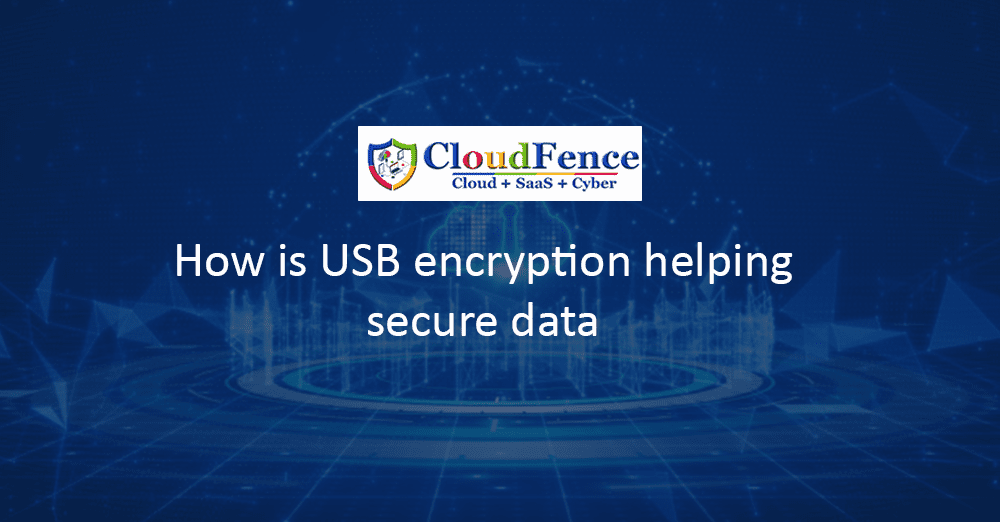
How is USB encryption helping secure data transfer?
As the workforce becomes mobile, the necessity of USB media is undeniable. Flash drives and hard drives have become a tool of convenience, and a must-have for employees on the move to carry corporate data – both sensitive and massive. While USB media is a necessity for its accessibility and portability, it is these very conveniences that also makes them probe to theft and data leakage.
A core part of endpoint security, USB encryption involves encrypting the USB ports of devices such as laptops and desktops that can be used for unauthorized access of data via USB devices, adapters, and peripherals. These security mechanisms prevent corporate networks from being hacked via plugged-in devices, protect from malware attacks, and ensure secure data transfer outside the enterprise.
Native to almost all the operating systems, the control of the USB ports is not flexible. Therefore, options to apply control are also few. Two ways to implement USB control and encryption are:
Blocking USB media usage: Disabling the USB adapters and ports in all the systems. This is not advisable since most printers and computer accessories use ‘system’s USB ports.
Built-in encryption: Purchasing USB devices with built-in encryption algorithms, or manually encrypting the file systems before providing it to users.
USB encryption vault: Automatically encrypting all confidential data, both enterprise and personal, that are transferred to USB storage devices
Shadow logging of data while transfer from the system to the USB, to keep a log and copy of the data transferred via USB.
For more exceptional control over allowed devices and file types, enterprises resort to third-party applications, which are robust and provide controls with varying degrees of granularity. For example, admins can block specific devices on specific ports by setting a rule on devices that should be allowed on ports. Admins can further finetune and provide user-based access by whitelisting some devices linked to a user.
Enterprises need to follow a 4-step approach to implement USB control and secure data leak at endpoints.
Monitoring access to systems and networks by employees can prevent a data breach. Some of the standard measures that can be implemented are as follows:
- Inspect data traffic at different stages – on the network (in motion) and at endpoints (at rest)
- Track complete sessions
- Control use of specific content by not allowing employees to save, print, or forward content with sensitive information
- Monitor usage of portable devices on laptops to prevent the transfer of data
While it is good to have in-house security teams, they are not enough when it comes to defending organizations against cybercrime. Enterprises need to deploy third-party data leak solutions to protect against constantly evolving and escalating cyber threats. While implementing a solution, enterprises should consider
- Using robust encryption mechanisms
- Maintaining real-time control over endpoint computers and round-the-clock USB monitoring
- Whitelisting specific USB removable drives
- Choosing a solution that allows central tracking
- Restricting permission of file sharing via USB and other external devices
- Integrating cloud-enabled identity and access management
- Having control over mobile device settings & features such as Wi-Fi and containerize corporate application data for people who use mobile for day-to-day operations
Security and data loss prevention should be a part of each employee’s education. All the employees, including the C-level executives, should understand the consequences of unsecured data and access to corporate systems. The IT department should educate on how to secure files when using cloud-based services.
To deliver these capabilities, typical data leak prevention software includes features such as:
- Advanced reporting & analytics framework for all device and network activities
- Silent monitoring of all activities
- Central installation of upgrades on end-user computers
- Flexibility to monitor and control offline computers
- Detailed view of the suspicious and unauthorized events happening within the organization
- Insights of the critical data leakage, user non-compliance with respective proofs
- Option to filter the activities for a duration
- Real-time alerts in email for sensitive events
- Emails
- File uploads
- Attachments
- Rogue or unproductive applications
- USB storage
- Malicious web browsing activity
- Browse Activities
- Application Usage
- Searches
- USB devises usage
inDefend is a one-stop solution to help protect your data from all kinds of insider threats within your organization. It allows you to monitor your employees’ behavioral patterns and pinpoint potential avenues for data exfiltration. This solution is built to achieve complete transparency over all the digital assets residing within your organization. With our unified solution, you can quickly tackle various kinds of security issues related to data exfiltration. It offers a proactive approach to the organization as follows:
Insider Threat Management – Get a complete user behavior analysis to protect your sensitive data from being compromised by employees by monitoring their activities and communication habits.
Real-time Alerts – Get real-time incident alerts for any data exfiltration activity that takes place within the organization.
Accurate Analytics – Get detailed cyber intelligence reports which highlight the critical and sensitive data leakage scenarios with granular visibility into team dynamics and organizational ecosystem.
Superior Control – Block specific channels or devices in case any sensitive data exfiltration is detected.
Enforced Encryption – Secure multiple endpoints with implemented encryption on external storage devices to restrict the use of sensitive information or files.
Optical Character Recognition (OCR) – Extract text from images and process them further to detect the presence of sensitive content like keywords, regular expressions, or file types with OCR.
Implementing a better security system is the need of the hour for all organizations. Our unified solution inDefend can secure your organization from data exfiltration. inDefend is designed to prevent data leakage via various communication channels and proactively keep you informed of any sensitive data exfiltration attempt on-the-fly. So, start securing your organization against data exfiltration with inDefend.

